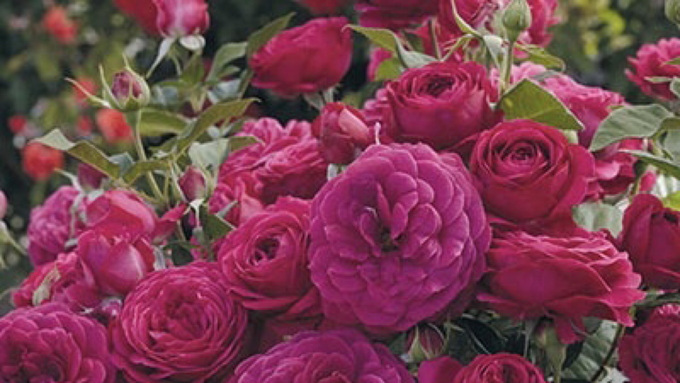
Participate in national Roses in Review survey

Celestial Night, a popular new floribunda rose, is a prolific bloomer. It's on the Roses in Review list this year. Courtesy Spring Hill Nurseries
The American Rose Society invites gardeners coast to coast to take part in Roses in Review, a national survey to rate newly introduced rose varieties.
This is the 97th time that rose growers have participated in Roses in Review, one of the oldest active volunteer gardener efforts of its kind. The results are compiled into the ratings used in the ARS handbook and for rose recommendations. That means your observations will help rose growers choose what to plant in their own gardens for generations to come.
Anyone who grows roses can participate. Not all roses are rated every year – there are too many! (Thousands of roses have ratings.) Instead, the roses on the review list are mostly new varieties or ones that had not yet been rated but are becoming known to a wider audience. Most first hit nurseries in 2018 or later.
Among the roses on this year’s review list: Celestial Night, a purple floribunda with very full blooms (and lots of them).
Deadline is 5 p.m. Sept. 26. The survey is conducted online at www.rose.org. That’s also where you’ll find the list of candidates.
Comments
0 comments have been posted.Sacramento Digs Gardening to your inbox.
Food in My Back Yard Series
May 6: Maintain soil moisture with mulch for garden success
April 29: What's (already) wrong with my tomato plants?
April 22: Should you stock up on fertilizer? (Yes!)
April 15: Grow culinary herbs in containers
April 8: When to plant summer vegetables
April 1: Don't be fooled by these garden myths
March 25: Fertilizer tips: How to 'feed' your vegetables for healthy growth
March 18: Time to give vegetable seedlings some more space
March 11: Ways to win the fight against weeds
March 4: Potatoes from the garden
Feb. 25: Plant a fruit tree now -- for later
Feb. 18: How to squeeze more food into less space
Feb. 11: When to plant? Consider staggering your transplants
Feb. 4: Starting in seed starting
Sites We Like
Garden Checklist for week of May 11
Make the most of the lower temperatures early in the week. We’ll be back in the 80s by Thursday.
* Plant, plant, plant! It’s prime planting season in the Sacramento area. Time to set out those tomato transplants along with peppers and eggplants. Pinch off any flowers on new transplants to make them concentrate on establishing roots instead of setting premature fruit.
* Direct-seed melons, cucumbers, summer squash, corn, radishes, pumpkins and annual herbs such as basil.
* Harvest cabbage, lettuce, peas and green onions.
* In the flower garden, direct-seed sunflowers, cosmos, salvia, zinnias, marigolds, celosia and asters. (You also can transplant seedlings for many of the same flowers.)
* Plant dahlia tubers.
* Transplant petunias, marigolds and perennial flowers such as astilbe, columbine, coneflowers, coreopsis, dahlias, rudbeckia and verbena.
* Keep an eye out for slugs, snails, earwigs and aphids that want to dine on tender new growth.
* Feed summer bloomers with a balanced fertilizer.
* For continued bloom, cut off spent flowers on roses as well as other flowering plants.
* Add mulch to the garden to maintain moisture. Mulch also cuts down on weeds. But don’t let it mound around the stems or trunks of trees or shrubs. Leave about a 6-inch-to-1-foot circle to avoid crown rot or other problems.
* Remember to weed! Pull those nasties before they set seed.
* Water early in the day and keep seedlings evenly moist.